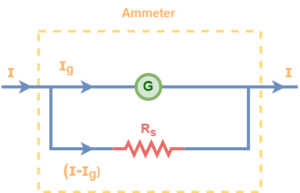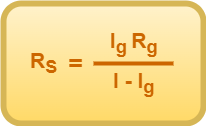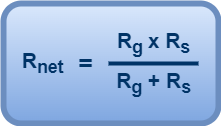Moving Coil Galvanometer-
Before you go through this article, make sure that you have gone through the previous article on Moving Coil Galvanometer.
We have learnt-
- A galvanometer is an instrument that is used to detect small currents in an electric circuit.
- An ordinary galvanometer gives a full scale deflection with a small current of few μA.
- The range of a galvanometer is increased by converting it into an ammeter.
In this article, we will learn the conversion of a galvanometer into an ammeter.
Ammeter-
- An ammeter is a device that is used to measure electric current through a circuit element.
- It is always connected in series with the circuit element through which the current is to be measured.
- To ensure that its insertion in the circuit does not change the current, an ammeter is designed to have very small effective resistance.
- An ideal ammeter has zero resistance.
Conversion of Galvanometer Into Ammeter-
To convert a galvanometer into an ammeter,
|
The value of shunt resistance depends on the desired range of the current to be measured.
Diagram-
The following diagram shows the conversion of a galvanometer into an ammeter-

Calculating Value of Shunt Resistance-
Let-
- Rg = Resistance of the galvanometer
- Rs = Shunt resistance
- Ig = Full scale deflection current i.e. current required to produce full scale deflection in the galvanometer
- 0-I = Desired current range of the ammeter
As galvanometer and shunt are connected in parallel, so-
Potential difference across the galvanometer = Potential difference across the shunt
Ig x Rg = (I – Ig) x Rs
From here, the value of shunt resistance is given by-

Important NoteBefore converting a galvanometer into an ammeter of desired range, we must know-
|
Effective Resistance-
The effective resistance of the converted ammeter is given by-

MCQs Quiz-
MCQs Quiz on Conversion of Galvanometer into Ammeter
Worksheet-
Worksheet on Conversion of Galvanometer into Ammeter
Next Article-
Conversion of Galvanometer into Voltmeter
Get more notes & other study material of the Chapter Moving Charges & Magnetism.

